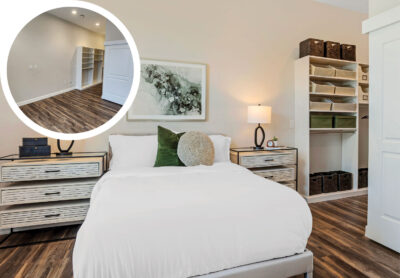If you’ve been paying attention to current trends in the multifamily industry, chances are you can’t avoid the conversation around Short-Term Rentals (STRs) any longer.
Years ago, you may have been able to look at this topic, wrap it up in a neat little bow and say: “Residents who rent their apartment out on home sharing websites are breaking their lease. Temporary strangers that are given access in and out of the building without the knowledge of management is an ongoing issue that must be prevented and stopped.”
However, residents want to have the ability to supplement their income when they travel and travelers want alternatives to the conventional hotel stay. When combined, this group of consumers makes up a large portion of the market that can’t be ignored any longer. Over the past few years, an expansive list of companies has grown to not only serve this population, but to serve the population of owners and operators who have typically tried to avoid this landscape altogether.
https://www.instagram.com/p/BtUKTS4DHOG/
the companies:
1. Niido – Niido is powered by Airbnb, and so far, they have two properties – one in Nashville and one in Orlando. These buildings were created for residents who want to supplement their income while they travel. They not only support home sharing here, they actually promote and encourage it. Niido offers conventional leases for unfurnished apartments and also host their own professionally designed, fully-furnished apartments at each location.
2. Sonder, The Guild, Stay Alfred, Locale – These four companies are different in their own ways with unique visions and brand promises. However, they are all focused on bridging the gap between a traditional hotel stay and a traditional Airbnb stay. The apartments they host are professionally designed and tend to be located in urban hubs and desirable neighborhoods. They attract travelers who want to stay and live like a local without sacrificing the element of professional hospitality.
3. Pillow – Pillow is a management system created specifically for owners and operators to take back ownership of STRs. This platform verifies all guests, includes a dashboard for management to see who is onsite, and makes it possible for properties to set their own policies for how and when residents are able to host. On top of the peace-of-mind of having control over the STRs, the owner receives 10% of each reservation.
4. ApartmentJet – Users can list units, book guests, manage their schedule, and more – making this platform an all-in-one tool for owners and operators who want to generate revenue from vacant apartments. ApartmentJet charges a 15% fee per stay to have access to their platform and its many capabilities. Another perk? They also do instant criminal background checks for all potential guests and they provide liability and damage coverage for each stay.
5. WhyHotel – By leveraging a new lease-up and its many vacant apartments, WhyHotel turns blocks of units into a “pop-up hotel.” The units are fully furnished and WhyHotel provides a 24/7 onsite host. They are able to give guests the feeling that they are staying somewhere between an apartment and a hotel while also generating revenue on empty apartments. This can make a big difference when a property is still in development or has hundreds of apartments to rent at one time.
6. SubletAlert – This company monitors short-term rental sites 24/7. SubletAlert is able to comb through listings to make sure none of your residents are listing their apartments in violation with their lease. With a dashboard and email alerts, owners and operators are able to take back control if they do not allow STRs on their properties.
In Conclusion:
Just looking at this list alone, there’s something for everyone in the industry. Some owners and operators may choose to lease apartments to companies like The Guild, or they may choose to allow residents to host their own apartments in a controlled way. Others are able to turn vacancies into revenue-generating units, and some may still want to steer clear of STRs completely. Today, you can find the right tool. While this market is definitely newer, it’s obvious that one size does not fit all when it comes to making the decision to start allowing STRs. Companies are continuously being created to fill each niche.
If you work in the Multifamily Industry for a company who has introduced STRs in some way, I’d love to hear from you! I’d also love to hear from you if your company doesn’t use them but you still have an opinion on the topic.






